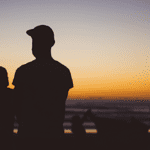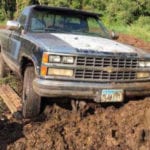 Food
Food  Food
Food  History
History 10 Odd Things Colonial Americans Kept at Home
 Weird Stuff
Weird Stuff 10 Superstitious Beliefs That Once Consumed Entire Cultures
 History
History 10 Bizarre Friendly Fire Incidents in Military History
 Technology
Technology 10 Modern Technologies That Accidentally Imitate Ancient Magic
 Mysteries
Mysteries 10 Mysteries of the Human Genome
 Weird Stuff
Weird Stuff 10 Things So Rare They’ve Only Been Found Once
 History
History 10 Legends Whose Last Moments Undid Their Glory
 Health
Health 10 Futuristic Ideas to Treat Common Medical Problems
 Weird Stuff
Weird Stuff Ten Surreal Attempts to Reverse Baldness
 Food
Food 10 Everyday Foods You Didn’t Know Were Invented by the U.S. Military
 History
History 10 Odd Things Colonial Americans Kept at Home
 Weird Stuff
Weird Stuff 10 Superstitious Beliefs That Once Consumed Entire Cultures
Who's Behind Listverse?

Jamie Frater
Head Editor
Jamie founded Listverse due to an insatiable desire to share fascinating, obscure, and bizarre facts. He has been a guest speaker on numerous national radio and television stations and is a five time published author.
More About Us History
History 10 Bizarre Friendly Fire Incidents in Military History
 Technology
Technology 10 Modern Technologies That Accidentally Imitate Ancient Magic
 Mysteries
Mysteries 10 Mysteries of the Human Genome
 Weird Stuff
Weird Stuff 10 Things So Rare They’ve Only Been Found Once
 History
History 10 Legends Whose Last Moments Undid Their Glory
 Health
Health 10 Futuristic Ideas to Treat Common Medical Problems
 Weird Stuff
Weird Stuff Ten Surreal Attempts to Reverse Baldness
10 Influential Profiles Of Notorious Criminals
There are few aspects of criminology more divisive than profiling. Some see it as a valuable tool that can provide insight into the minds of killers and actually help apprehend them, while others regard it as mere guesswork or a novelty act akin to a mentalism trick.
This list isn’t meant to determine the worth of offender profiling. Instead, we will explore its history by looking at 10 landmark cases.
10 George Metesky
The Mad Bomber
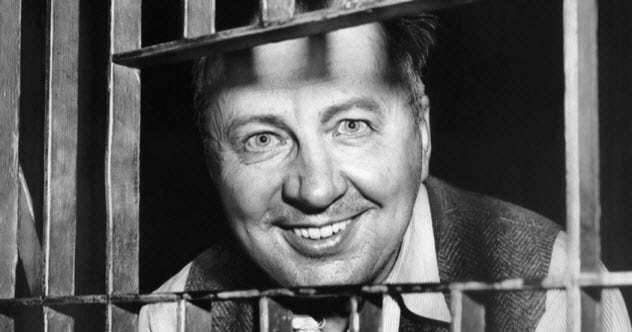
We cannot talk about notorious profiles without mentioning the one that launched the trend—that of the Mad Bomber. George Metesky terrorized New York City for 16 years, planting at least 33 bombs and injuring 15 people. At a loss for leads, the police turned to psychiatrist James Brussel who assembled what he called a “portrait” of the criminal.
Brussel gleaned information from the bomber’s multiple letters threatening the destruction of Consolidated Edison. Besides Metesky’s obvious grudge against the company, the psychiatrist also opined that the bomber was a middle-aged man suffering from paranoia. He was educated but foreign born due to several odd phrases used in his writing.
According to Brussel, the bomber was a Slav and likely a Catholic. Then, in a moment more reminiscent of a mentalism trick than profiling, Brussel said that the bomber would be impeccably neat, courteous, and wearing a buttoned, double-breasted suit when he was caught.
When he was arrested a month later, Metesky was actually wearing his pajamas as it was midnight. However, he did get dressed in a buttoned, double-breasted suit. Everything else Brussel said in his “portrait” seemed to be true.
But things didn’t actually go that smoothly. The main account of the event comes from Brussel’s own memoir, and he glossed over the misses and exaggerated the hits. In reality, he never said that the bomber was Slav but that he was born in Germany. He also said that Metesky had a facial scar, a night job, and expertise with ordnance, none of which were true.[1]
9 David Meirhofer
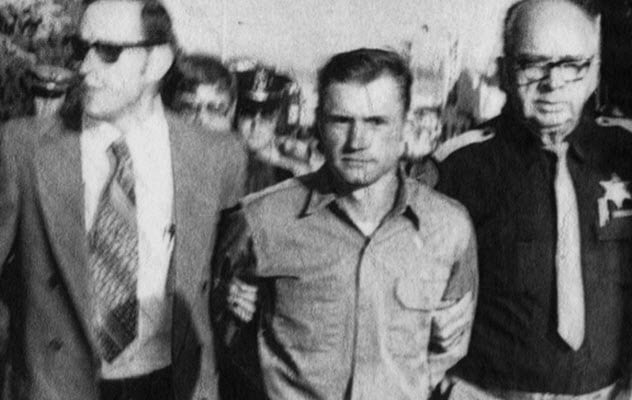
The first profile created by the FBI’s Behavioral Science Unit (BSU) was used to catch Montana serial killer David Meirhofer in 1974. Agents Howard Teten and Patrick Mullany worked the case under the supervision of Robert Ressler.
In June 1973, seven-year-old Susan Jaeger was kidnapped while camping with her family. Her abductor cut through her tent with a knife. Teten and Mullany believed that the criminal had acted impulsively and concluded that he was a young, white male. He also was a loner who probably lived in the area. Most notably, they thought that the kidnapper had already killed Susan and took a trophy from his crime, possibly a body part.[2]
Their main suspect was David Meirhofer, a 23-year-old Vietnam vet whom everyone else regarded as a gentle, courteous young man. In 1974, he became a suspect in another murder. This time, it was a young woman named Sandra Smallegan who had spurned Meirhofer’s advances. Even so, he passed a polygraph test which again dismissed him as a suspect in the eyes of local law enforcement.
The FBI considered Meirhofer a psychopath but believed that he could be dominated by a woman. They put him in a room with Marietta Jaeger, Susan’s mother. She spoke with compassion, pleading with Meirhofer to tell them where the young girl was. At first, he seemed unaffected. But Marietta later received a phone call from a “Mr. Travis” looking to confess, and she recognized the voice as Meirhofer’s.
Based on Marietta’s testimony, authorities got a search warrant for his place, where they found remains from Susan and Sandra. Meirhofer confessed to their murders and the prior killings of two young boys. He committed suicide a day later.
8 Jack The Ripper
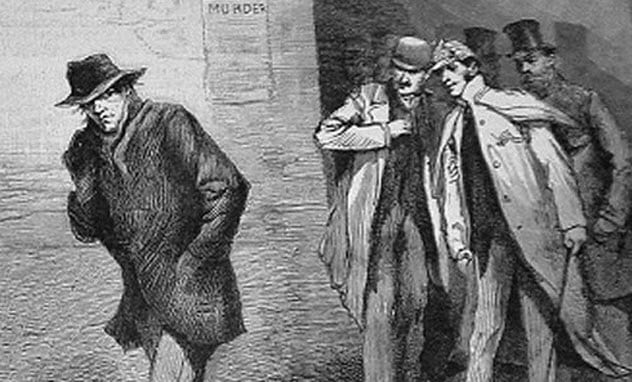
One of the earliest profiles comes courtesy of Thomas Bond, the doctor who investigated the murders committed by Jack the Ripper. As surgeon to the A Division of the Metropolitan Police, he worked on many gruesome and infamous cases of that era. However, when it came to Saucy Jack, Bond was asked to give his opinion, which he developed into a thorough report that is very reminiscent of modern profiles.
He performed the autopsy of Mary Jane Kelly and read the notes on the other victims. His first observations were clinical in nature—killing methods, murder weapons, positions of the bodies, etc. Then he opined that mutilation was the main objective in all the cases.
Due to sloppiness, he believed that the killer had no medical expertise whatsoever and even lacked the skills of a butcher. This went against the thinking of the police, who had concluded that Jack had medical training due to the removal of the organs.[3]
Bond believed that Jack the Ripper looked like an inoffensive, respectable, middle-aged man who usually behaved coolly and calmly but was prone to periodic homicidal impulses. Bond felt that the mutilations could have been a sign of satyriasis, which we now call hypersexuality. Of course, Jack the Ripper remains as elusive as ever, so we will probably never know if Bond was right.
7 Mike DeBardeleben
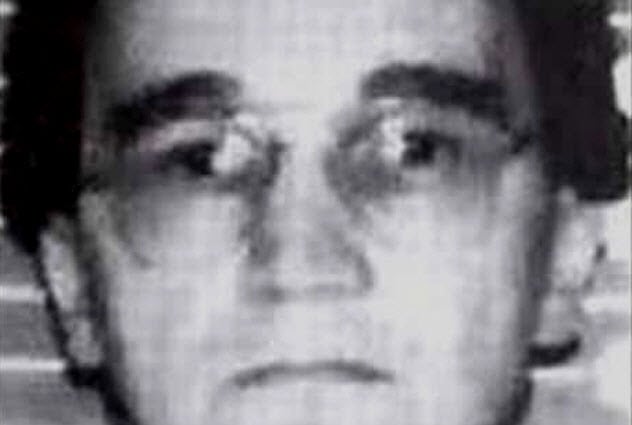
James Mitchell DeBardeleben was convicted of multiple crimes and sentenced to 375 years in prison. He was indicted, though not convicted of two murders. He was also suspected of several others. And yet circumstantial evidence suggests these might only be a fraction of the horrors committed by a man described by FBI profiler Roy Hazelwood as “the best-documented sexual sadist since the Marquis de Sade.”
Known as the “Mall Passer,” DeBardeleben was initially investigated by the Secret Service for counterfeiting. He would go to malls and make small purchases using fake $20 bills. Then he would pocket the change in real currency. Eventually, he was recognized by a store clerk who alerted the police and DeBardeleben was arrested.
Secret Service agents went through his car and found guns, counterfeit bills and driver’s licenses, license plates, a police badge, and drugs. Pretty much what they were expecting, but what they really wanted was his printing press.
They searched his apartment, which led them to a storage unit. No press there, but they did find two footlockers. Inside were handcuffs, chains, shoelaces, bloody panties, hundreds of sexually explicit photos, and audiotapes that recorded torture sessions.
It became clear that DeBardeleben was more than just a counterfeiter, and the Secret Service turned the case over to the FBI. Conversely, they asked the profilers for help trying to understand what made DeBardeleben tick.
John Douglas had constructed a profile early in the investigation that proved fairly accurate. He said that the suspect had a domineering mother, a record of previous offenses, and adjustment problems in school and the military. DeBardeleben had an alcoholic mother, was first arrested at age 16, and was court-martialed out of the army.[4]
Meanwhile, FBI profiler Hazelwood, who specialized in sexual crimes, studied DeBardeleben closely. Hazelwood had developed the six categories of serial rapists. He classified DeBardeleben as the most dangerous kind: the anger-excitation rapist, a sexual sadist who wanted to punish women.
6 Robert Pickton
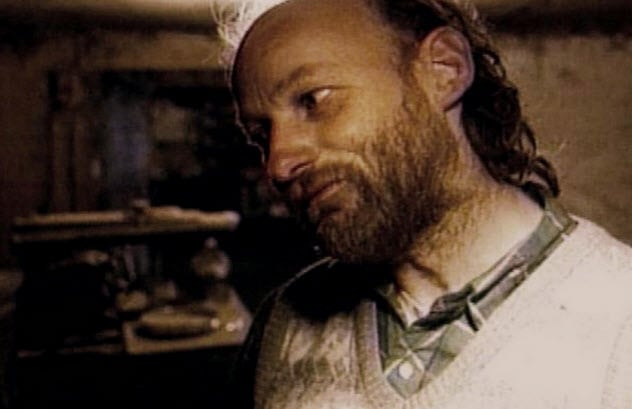
Geographic profiling is an investigative method that looks at the locations involved in a series of crimes to determine where a criminal might live. It is a relatively new technique developed in the 1990s. Particularly in its infancy stages, it struggled to find legitimacy among law enforcement, sometimes with dire consequences.
Kim Rossmo was an officer with the Vancouver Police Department who had a degree in environmental criminology. He developed a formula bearing his name which formed the basis for geographic profiling software. In the mid- to late 1990s, Rossmo was convinced that Vancouver had a serial killer on its hands, preying on prostitutes in the city’s skid row.
He was right. The killer’s name was Robert Pickton, who would later be convicted of six murders but confess to 49 killings. In charge of the geographic profiling unit, Rossmo was asked to analyze the data on multiple cases of missing women. He saw that from 1995 on, more and more females disappeared who fit the same profile. He believed that this kind of escalation in such a short time frame and geographic location could only be explained by a serial killer.[5]
The people at the Homicide Division disagreed, particularly section chief Fred Biddlecombe. Rossmo later said that Biddlecombe had a “small temper tantrum” when Rossmo drafted a press release to warn the public. Pickton was eventually captured following an investigation fraught with incompetence.
5 David Carpenter
The Trailside Killer
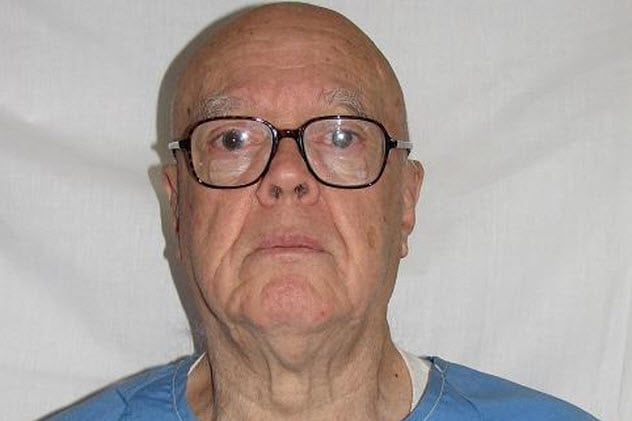
John Douglas is among the best-known names in the profiling world. He interviewed some of the most notorious murderers of the 1970s and ’80s and wrote extensively about them. Characters like Jack Crawford from the Hannibal Lecter franchise and Mindhunter lead Holden Ford are directly based on him.
Of course, Douglas also collaborated with local police departments to help capture killers at large. During the late ’70s to early ’80s, someone known as the Trailside Killer was raping and murdering people in state parks near San Francisco.
Douglas believed that the killer was a local who knew the area and targeted victims of opportunity. The murderer was shy, reclusive, and awkward around people, particularly women. Most notably, the profiler concluded that the Trailside Killer had a stutter.[6] David Carpenter was arrested in 1981. The profile got some things wrong, like the criminal’s age. But it was right about a lot of things, including the stutter.
Douglas reasoned that the killer had a speech impediment due to the way he “blitz” attacked and dominated his victims, suggesting that he lacked confidence due to a condition that shamed him. At the same time, a physical handicap would have prevented him from overpowering his targets and disfigurement would have been more memorable to witnesses.
The event was later used as a plot in the first episode of profiling show Criminal Minds. Special agent Jason Gideon (also based on Douglas) predicted that the Footpath Killer had a stutter and used it to capture him.
4 Duffy And Mulcahy
The Railway Rapists
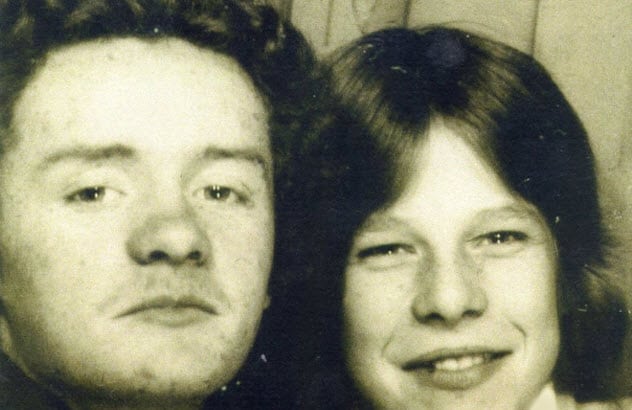
The first profile that was used by police to catch a killer in the United Kingdom came courtesy of psychology professor David Canter in 1986. His work led to the arrests of John Duffy and David Mulcahy.
A person dubbed by the media as the “Railway Rapist” was assaulting women near train stations. Dozens of rapes were committed in the early ’80s. Duffy and Mulcahy were among the many suspects, but none of the women could positively identify them or even confirm that there were two perpetrators.
In 1985, the criminals moved up to murder. Three women were killed within a six-month period, each strangled using a homemade tourniquet. Professor David Canter was brought in from Surrey University to create a profile of the offender(s).
The psychologist developed a 17-point list of traits and clues related to the killer. He believed that the culprit lived in the area near the first three crimes. The killer was in his mid- to late twenties and had a wife or girlfriend. He was right-handed and had a semiskilled job that involved isolated work. He had knowledge of railways and possessed previous criminal convictions for violence. Twelve of the 17 characteristics matched Duffy, including all the ones mentioned above.[7]
Besides working as part of a team, Duffy also preyed on women alone. Canter’s profile convinced authorities to place him under surveillance, and Duffy was arrested after following a woman into a secluded park. At his house, police found sufficient evidence to charge him. He was convicted in 1988. Mulcahy evaded justice until 1997 when Duffy finally fingered him as his partner in crime.
3 John Joubert
The Woodford Slasher
A 13-year-old boy named Danny Joe Eberle vanished one day in 1983 while on his paper route. His body was found a few days later dumped in high grass off the road. It had been bound, stripped, and mutilated.
Local police had a good lead—the rope used to bind the boy was very distinctive and unusual. Typically, this should have made it easier to trace. But in this case, nobody could identify it.
Meanwhile, police also turned to the FBI’s Behavioral Science Unit for help. A provisional profile suggested that the killer was a young single male in his early twenties with a slender build and neat appearance. He was a loner and a latent homosexual.[8] Danny Joe’s body had bite marks, so there was also a sexual component to the murder. Police looked at sex offenders in the area and dismissed them based on the profile.
A few months later, another young boy was abducted and killed in the same way. His body was dumped in a heavily wooded area. The FBI updated the profile, saying that the criminal was a local, possibly employed at the nearby air force base. The easiness of the abductions suggested that he had experience working with young boys, perhaps as a coach or in Boy Scouts.
Law enforcement caught their big break a month later when a woman who ran a daycare center noticed a man cruising past her house repeatedly. She took down the license plate, which eventually led police to John Joubert.
He fit the profile perfectly, including working as a radar technician at the air force base and having previous experience as an assistant scoutmaster. In his possession, authorities found the murder weapon and the distinctive rope which Joubert had obtained from Korea. It was later discovered that Joubert had also killed a boy in Portland a year earlier.
2 Richard Chase
The Vampire Of Sacramento
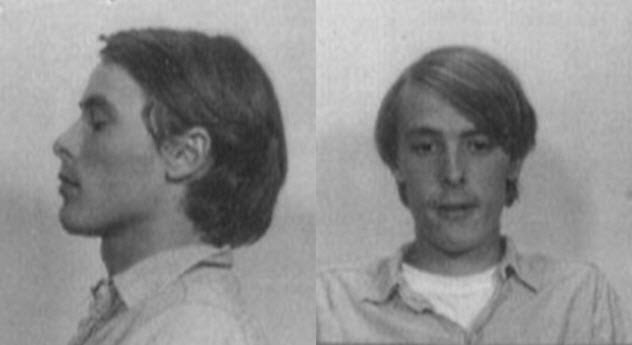
Few killing sprees have been more disturbing than that of Richard Chase, the Vampire Killer. He engaged in cannibalism, vampirism, and necrophilia.
From a profiling perspective, his case is notable for being one of the first where the FBI’s Behavioral Science Unit was brought in on a hot case. Until then, profiling was regarded as a last-ditch effort reserved for cold cases with no other leads.
Robert Ressler was called upon in 1978 after the Sacramento Police Department was left stunned at the gruesomeness of the murder of Teresa Wallin. His initial profile portrayed the killer as a white male in his mid-twenties who was undernourished and had a slovenly appearance.
He was a loner without a job who had a history of mental illness and drug use.[9] He lived alone or with his parents, had dropped out of high school or college, and had no prior military record. Lastly, Ressler was convinced that the killer was suffering from some form of paranoid psychosis.
A few days later, the criminal broke into the home of Evelyn Miroth. He killed the four people inside and escaped in a station wagon which was later found abandoned. Ressler was convinced that the suspect was so disorganized that he was barely making any effort to hide his crimes. Therefore, Ressler reasoned that the killer lived alone within a mile of the abandoned car and walked around completely disheveled and likely with blood on his clothes.
Police officers hit the streets. Soon, they got a tip from a woman who had had an unnerving encounter with a former classmate who perfectly fit the description. He was Richard Trenton Chase, and he lived a block away from the dumped station wagon.
Police quickly arrested him. He had the murder weapon, a victim’s wallet, plus an apartment covered in blood with body parts in the fridge. It was clear that they had the right man, and Ressler’s profile received a lot of credit for being mostly spot-on.
1 Robert Hansen
The Butcher Baker

In 1983, 17-year-old prostitute Cindy Paulson desperately flagged down a trucker driving through Anchorage, Alaska. She said that she had just escaped a man who had abducted and raped her and planned to “take her out to his cabin.” She told the same story to the police, who identified her captor as Robert Hansen, the local baker.
However, they saw Hansen as a meek, quiet family man with a humble occupation who also had a friend who provided him with an alibi. Therefore, they believed Hansen when he claimed that Paulson was trying to create trouble for him because he refused her extortion attempt.
Luckily, not all officers were as dismissive. Detective Glenn Flothe was investigating a possible serial killer as multiple bodies of young women had been found over the last few years. He reached out to the FBI for a profile.
John Douglas told Flothe that he was dealing with a sadistic thrill killer with a history of lesser crimes such as theft or arson. The criminal had some kind of defect which led to him being rejected by women repeatedly. Once again, Douglas predicted that the killer had a stutter.[10] He was an experienced hunter who kept trophies of his kills.
This all pointed to Robert Hansen. Not only did he stutter, but he suffered from severe acne which had left his face with pockmarks. In his youth, he had been in trouble for petty thefts and had served jail time for burning down a garage.
The profile helped secure a search warrant. At Hansen’s property, police found the murder weapons plus jewelry, business cards, and IDs from his victims. They also discovered an aviation map with lots of Xs on it. Hansen eventually confessed that, since the early ’70s, he had taken at least 17 women into the woods and hunted them.
Read more bizarre stories about criminals on 10 Criminals Who Sued Their Victims and Top 10 Bizarre Alibis Criminals Used To Explain Their Crimes.
